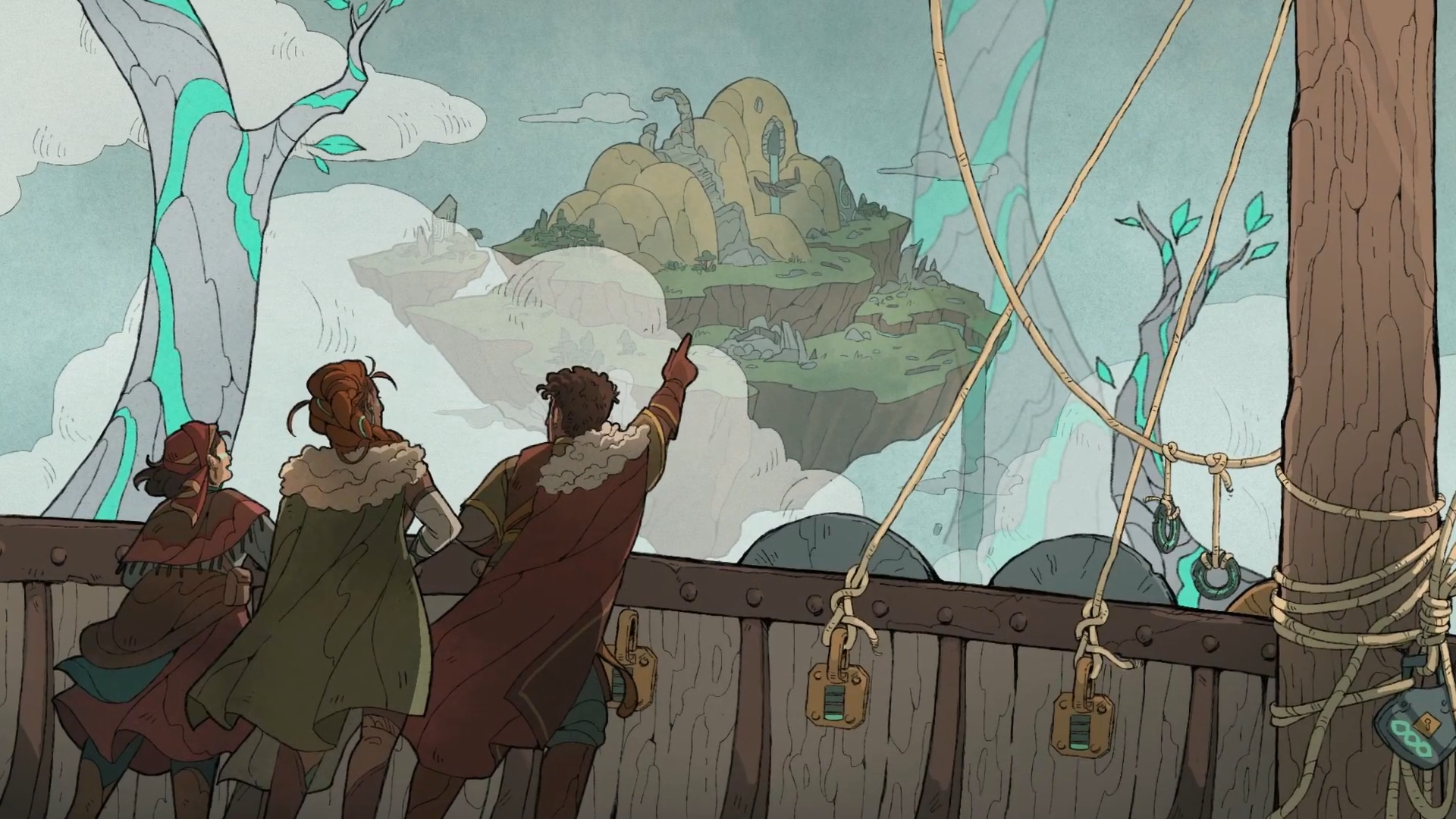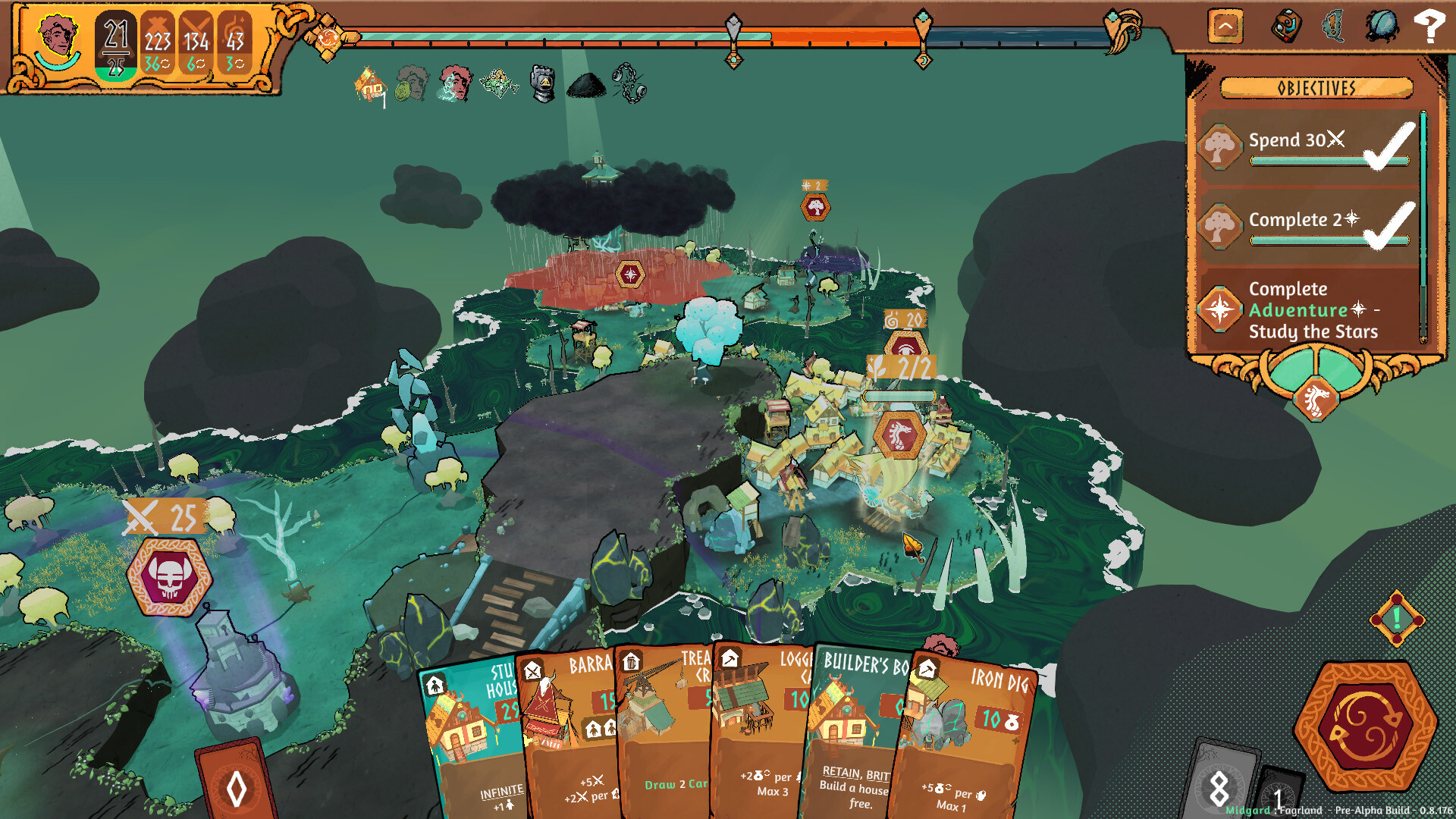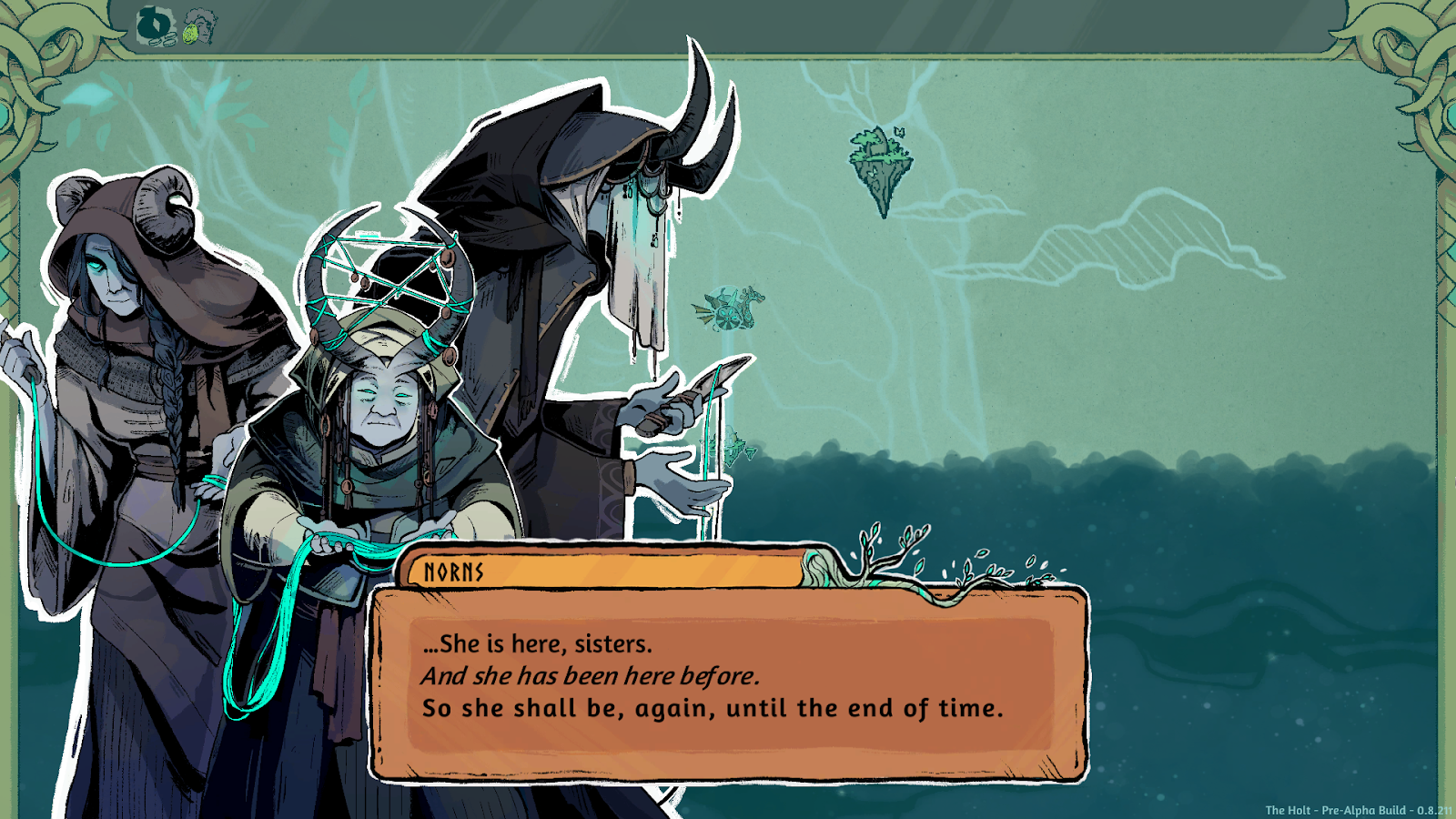Help your tribe of vikings race against the end of the world in this peculiar pairing of deckbuilder and city builder
Roots of Yggdrasil is a clever merging of genres, though still has work to do to make its city building truly satisfy.

What do vikings know about civic planning?
I pondered that question while I viewed my settlement, which stretched from the base of my flying ship to the shores of a river hanging in space. In that vast expanse I’d just placed a house right next to an iron mine, which would set me up to place a market near both and, through an unknown alchemy, bring an ancient sapling growing nearby into bloom. In a real city, this arrangement would be horrific, not to mention dangerous. But my vikings don’t care about living next to piercing noise or mining accidents. The end of the world is coming—noise pollution iss the least of their worries.
In Roots of Yggdrasil, you are the leader of a crew of vikings running from a world-destroying force called the Ginnungagap. In your ship you crawl between floating islands circling the World Tree, trying to reach the top before you’re swallowed by the darkness and have to begin again. It’s a deckbuilding city builder, a mouthful that combines two popular genres.
You build three or four settlements in a run, using each to launch off to your next destination. Each settlement is interspersed with events, creating the ladderlike progression seen in games like, say it with me, Slay the Spire. Except instead of a battle, each stop is either an event or a settlement. Right now these events are simple, either a meeting with the Norns (the mythic Norse figures of fate) or a chance to add or remove cards from your deck or get a random artifact that grants a bonus.
Cards are used to create buildings like homes, mines, or training grounds that provide one of three resources each turn: population, might, and Eitr (magical energy). Cards can also defeat threats or provide bonuses like faster exploration or extra supplies. Placing buildings is necessary to meet the requirements to bloom Saplings, the trees that provide your ship with power. To complete a settlement, you might need to bloom one tree by reaching 40 residents, and another by having three houses in range. Only once you meet these requirements can you leave a settlement and escape an untimely trip back to the beginning.

Bringing deckbuilding and citybuilding together means that Roots of Yggdrasil has to teach both. I was happy to find that it does a mostly great job, even going so far as to explain the deckbuilding basic that the more cards you have, the longer it takes for each card to return. I appreciated the transparency, though I’d still recommend anyone thinking of playing this try another deckbuilder and another city builder first.
The biggest struggle I faced in my time with Roots of Ygdrassil was one that’s familiar to both genres: its demand that I optimize my space. In city builders I like to take the time to make my creations nice and symmetrical, even give them personality when it’s an option. Because the buildings in Roots of Yggdrasil are effective based on their proximity to other buildings, though, there’s little freedom in terms of placement, at least if you want your structures to do anything. And houses have randomized shapes, meaning that at some point my curated neighborhoods sprawled out into chaos. The game never asks you to follow any standard of visual pleasantness, but I was disappointed there wasn’t more room for creativity. In deckbuilders I like to keep my decks compact, and while that’s easier to accomplish here, I still found my numbers ballooning as I was offered far more cards to add than I’d ever have opportunities to remove.
Keep up to date with the most important stories and the best deals, as picked by the PC Gamer team.

All your efforts are dependent on a day-to-night timeline that tracks the time left until the Ginnungagap arrives to erase your hard work. At first, trying my hardest to make neat and sustainable settlements, I blew past the time limit and ended up with no resources left to start up my ship and leave. The time pressure Roots of Yggdrasil makes narrative sense, and it’s effective: I didn’t expect to feel so panicked the first time the evening icon tripped over into night, conjuring a more darkly shaded and minor-keyed version of the world that let me know I needed to get out of there. But even if you’re not running behind like I was, leaving early means you have extra time to travel on the world map. There’s not much reason to stay after you activate the saplings that let you move on.
Once I figured out I should be rushing, I made it to the end of a run. But it felt a bit like eating fast food when you want something homemade: I never ended up with a settlement I could sit back and admire.
The momentum picked up after my first clear, when the game told me that reaching the end will be more challenging in future runs. I felt even less freedom with where I placed my buildings, but the difficulty actually helped bring Roots of Yggdrasil into focus: it felt more like I was solving a puzzle with each deliberate card placement. However, in later levels the fiddliness of a handful of cards was my biggest enemy, with many turns where I was just sitting there cycling through my deck, crossing my fingers that the card I needed would turn up, and fit in its place, before the deadline.
As it is now, Roots of Yggdrasil harnesses the forward march of time, but the rush is frustrating just as often as it is thrilling. Since it's in early access, I think there’s room to bring this idea to a finer point, making a machine of forward momentum that demands you always be on your toes. I’d just ask for more freedom to experiment—and maybe some viking decor.
Roots of Yggdrasil releases into early access on Steam January 24.

Emily Price is a freelance writer and columnist at Unwinnable Magazine. She is also a medievalist and has read the Canterbury Tales at least once. Her favorite genres are RPGs, visual novels, and any game with customizable furniture.


